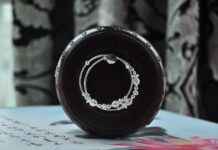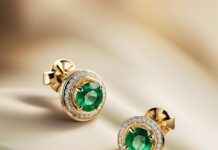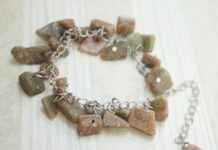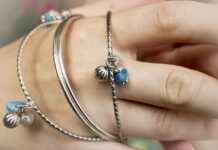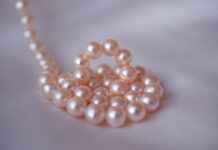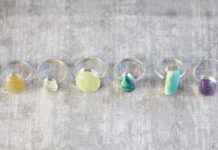This article delves into the increasing popularity of sustainable and ethical jewelry brands, emphasizing their importance, influence on the industry, and the shift in consumer behavior towards more responsible purchasing practices.
What Are Sustainable and Ethical Jewelry Brands?
Sustainable and ethical jewelry brands are those that prioritize environmental responsibility and fair labor practices. These brands ensure that their products are created with minimal harm to the planet and its inhabitants, often incorporating recycled materials and ethically sourced gemstones.
Why is Sustainability Important in Jewelry?
The significance of sustainability in jewelry cannot be overstated. It addresses critical environmental issues, advocates for ethical labor conditions, and encourages consumers to make choices that have a positive impact on both society and the environment.
The Environmental Impact of Traditional Jewelry
Traditional jewelry production frequently involves harmful mining and manufacturing processes that can devastate ecosystems. Understanding these impacts is crucial for recognizing the need for sustainable alternatives.
Mining Practices and Their Consequences
Mining for precious metals and gemstones often results in deforestation, pollution, and the destruction of wildlife habitats. Sustainable brands strive to mitigate these consequences through responsible sourcing and recycling initiatives.
Carbon Footprint of Jewelry Production
The carbon emissions associated with jewelry production include energy consumption, transportation, and waste generation. Many sustainable brands are actively working to reduce their carbon footprint by adopting eco-friendly practices and utilizing renewable energy sources.
Key Features of Ethical Jewelry Brands
Ethical jewelry brands emphasize transparency, fair trade, and social responsibility, ensuring that every aspect of their supply chain aligns with ethical values and supports the communities involved in production.
How to Identify Sustainable Jewelry Brands?
To identify sustainable jewelry brands, consumers should look for various certifications, the materials used, and the brand’s commitment to ethical practices, enabling informed purchasing decisions.
Certifications and Standards to Look For
Certifications such as Fair Trade and the Responsible Jewelry Council indicate a brand’s commitment to ethical practices, providing consumers with confidence in the integrity of their purchases.
Materials Used in Sustainable Jewelry
Sustainable jewelry often features recycled metals, lab-grown gemstones, and ethically sourced materials. Recognizing these components helps consumers select products that resonate with their values.
The Consumer Shift Towards Ethical Purchasing
There is a noticeable trend among consumers towards ethical purchasing, with many seeking out brands that reflect their values and contribute positively to social and environmental issues.
Millennials and Gen Z Leading the Change
Younger generations, particularly Millennials and Gen Z, are at the forefront of the demand for sustainable and ethical jewelry, favoring brands that showcase social responsibility and environmental stewardship.
The Role of Social Media in Promoting Ethical Brands
Social media platforms play a crucial role in raising awareness about sustainable jewelry brands, enabling consumers to share their values and discover new ethical options through influencer partnerships and campaigns.
The Future of Sustainable Jewelry
The outlook for sustainable jewelry is promising, with innovations in materials, production methods, and consumer awareness paving the way for a more responsible and ethical industry.
Innovations in Sustainable Materials
Technological advancements are leading to the creation of new sustainable materials, such as lab-grown diamonds and recycled metals, reshaping the jewelry landscape and providing consumers with more eco-friendly choices.
Consumer Education and Awareness Initiatives
Education initiatives aimed at increasing awareness about the importance of sustainable practices in jewelry are vital for fostering a culture of responsible consumption and encouraging brands to adopt ethical standards.
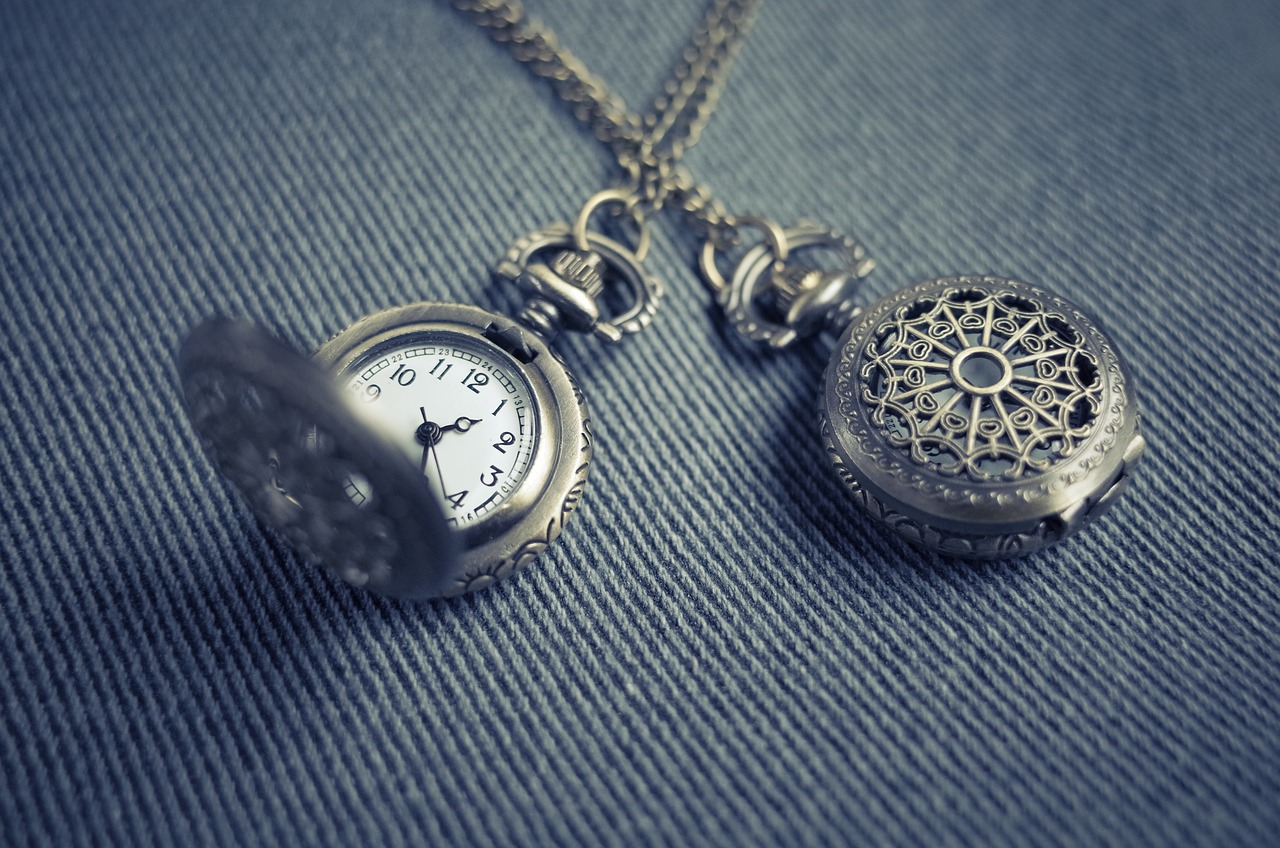
What Are Sustainable and Ethical Jewelry Brands?
The Rise of Sustainable and Ethical Jewelry Brands
In recent years, there has been a significant shift in consumer behavior towards more responsible purchasing choices. This trend is particularly evident in the jewelry industry, where sustainable and ethical brands are gaining popularity. These brands not only focus on creating beautiful pieces but also ensure that their production processes are environmentally friendly and socially responsible.
Sustainable and ethical jewelry brands are those that prioritize environmentally friendly practices and fair labor conditions. They aim to produce jewelry in a manner that minimizes harm to the planet and its inhabitants. These brands often utilize recycled materials, ethically sourced gemstones, and renewable energy in their production processes. By doing so, they ensure that their products are not only aesthetically pleasing but also contribute positively to the environment and society.
Why is Sustainability Important in Jewelry?
The importance of sustainability in jewelry cannot be overstated. Traditional jewelry production often involves harmful practices such as mining, which can lead to significant environmental degradation. Sustainable brands address these issues by promoting ethical labor practices and encouraging consumers to make choices that support local communities. This shift not only helps protect the environment but also fosters economic growth in regions where these materials are sourced.
Key Features of Ethical Jewelry Brands
- Transparency: Ethical brands provide clear information about their sourcing and production processes.
- Fair Trade: They ensure that workers are compensated fairly and work under safe conditions.
- Social Responsibility: Many brands engage in community development initiatives, giving back to the communities they source from.
How to Identify Sustainable Jewelry Brands?
Consumers can identify sustainable jewelry brands by looking for specific certifications such as Fair Trade and Responsible Jewelry Council. Additionally, understanding the materials used, such as recycled metals and lab-grown gemstones, can help consumers make informed decisions that align with their values.
The Future of Sustainable Jewelry
The future of sustainable jewelry is bright, with ongoing innovations in materials and production methods. As consumer awareness continues to grow, more brands are likely to adopt ethical practices, leading to a more responsible jewelry industry.

Why is Sustainability Important in Jewelry?
Sustainability in the jewelry industry has emerged as a critical focus for both producers and consumers. As awareness of environmental and social issues grows, the demand for jewelry that aligns with ethical practices is on the rise. This shift not only addresses pressing environmental concerns but also promotes fair labor practices, ensuring that artisans and workers are treated with respect and dignity.
One of the primary reasons sustainability is vital in jewelry is its potential to mitigate environmental damage. Traditional jewelry production often relies on mining practices that can devastate ecosystems, leading to deforestation, soil erosion, and water pollution. By choosing sustainable options, consumers can help reduce the negative impact on the planet and encourage the adoption of more eco-friendly practices within the industry.
Moreover, sustainable jewelry brands typically emphasize ethical labor practices. This means that workers involved in the production process are paid fairly, work in safe conditions, and are not subjected to exploitation. By supporting such brands, consumers can contribute to a fairer economy and help uplift local communities, particularly in regions where mining and jewelry production are prevalent.
In addition, the growing interest in sustainability has led to an increase in transparency within the supply chain. Consumers are now more informed about where their jewelry comes from, the materials used, and the people behind its creation. This transparency fosters trust and encourages brands to maintain high ethical standards.
Ultimately, the shift towards sustainability in jewelry is not just about making responsible choices; it’s about creating a positive impact on the world. As consumers become more conscious of their purchasing decisions, they have the power to drive change in the industry, encouraging brands to adopt sustainable and ethical practices that benefit both people and the planet.
The Environmental Impact of Traditional Jewelry
Traditional jewelry production is often associated with significant environmental challenges. The processes involved, particularly mining and manufacturing, can have detrimental effects on ecosystems. Understanding these impacts is essential for recognizing the urgent need for sustainable alternatives within the jewelry industry.
Mining Practices and Their Consequences
Mining for precious metals and gemstones frequently leads to severe environmental degradation. This includes:
- Deforestation: Large areas of forest are cleared to access mineral deposits, disrupting local wildlife and contributing to biodiversity loss.
- Pollution: Mining operations release harmful chemicals into the soil and water, affecting surrounding communities and ecosystems.
- Habitat Destruction: The removal of land for mining destroys habitats for numerous species, leading to population declines and extinctions.
Carbon Footprint of Jewelry Production
The carbon footprint associated with traditional jewelry production is substantial. It encompasses:
- Energy Use: Mining and manufacturing processes are energy-intensive, often relying on fossil fuels that contribute to greenhouse gas emissions.
- Transportation: The global supply chain involved in jewelry production adds further emissions through the transportation of raw materials and finished products.
- Waste Generation: The production process often results in significant waste, which can pollute land and waterways.
The Need for Sustainable Alternatives
Given the profound environmental impacts of traditional jewelry production, there is a pressing need for sustainable alternatives. Brands that prioritize responsible sourcing, recycling, and eco-friendly manufacturing processes are emerging as vital players in the industry. By choosing sustainable jewelry, consumers can support practices that protect the environment and promote social responsibility.
In conclusion, understanding the environmental impact of traditional jewelry is crucial for fostering a more sustainable future. As awareness grows, both consumers and brands can contribute to a jewelry industry that respects the planet and its resources.
Mining Practices and Their Consequences
Mining practices for precious metals and gemstones have significant consequences that extend far beyond the immediate extraction processes. The environmental and social impacts of these practices are profound, often leading to deforestation, pollution, and habitat destruction. As the demand for jewelry continues to rise, the need for sustainable practices becomes increasingly critical.
When mining occurs, large areas of forest are often cleared to access mineral deposits. This deforestation not only contributes to the loss of biodiversity but also disrupts local ecosystems. Many species lose their natural habitats, leading to a decline in wildlife populations. Moreover, the removal of trees decreases carbon storage, exacerbating climate change.
In addition to deforestation, mining operations frequently result in pollution of nearby water sources. The use of toxic chemicals, such as mercury and cyanide, in the extraction process can contaminate rivers and streams, posing serious health risks to local communities and wildlife. This pollution can lead to long-term ecological damage, affecting not only the immediate area but also downstream ecosystems.
Furthermore, the mining industry often leads to habitat destruction on a massive scale. The excavation and processing of minerals can obliterate entire landscapes, altering the natural environment irreparably. This destruction impacts not only flora and fauna but also local communities that rely on these ecosystems for their livelihoods.
In response to these pressing issues, many sustainable jewelry brands are emerging with a commitment to responsible sourcing and recycling initiatives. These brands aim to mitigate the negative impacts of traditional mining practices by utilizing recycled materials and ensuring that their sourcing methods do not contribute to environmental degradation. By prioritizing sustainability, they offer consumers a way to enjoy beautiful jewelry without compromising the health of our planet.
Ultimately, understanding the consequences of mining practices is essential for consumers who wish to make informed choices. By supporting sustainable jewelry brands, individuals can play a crucial role in promoting environmental stewardship and ethical practices in the jewelry industry.
Carbon Footprint of Jewelry Production
The carbon footprint of jewelry production is a significant concern in today’s environmentally conscious world. It encompasses various factors including energy consumption, transportation, and waste generation. These elements contribute to the overall environmental impact of the jewelry industry, which has traditionally relied on practices that are not sustainable.
Jewelry production often involves extensive mining activities that not only consume large amounts of energy but also generate considerable emissions throughout the supply chain. The extraction of precious metals and gemstones typically requires heavy machinery, which relies on fossil fuels, further increasing the carbon footprint. Additionally, the transportation of raw materials and finished products across long distances adds another layer of emissions, exacerbating the environmental impact.
In response to these challenges, many sustainable jewelry brands are actively seeking to reduce their carbon emissions. They are implementing eco-friendly practices and transitioning to renewable energy sources in their production processes. For instance, some brands utilize solar or wind energy to power their manufacturing facilities, significantly lowering their reliance on fossil fuels and reducing their overall carbon footprint.
Moreover, these brands often prioritize recycling initiatives by using recycled metals and ethically sourced materials. This not only minimizes waste generation but also decreases the demand for new raw materials, which can have a detrimental effect on the environment. By focusing on responsible sourcing, sustainable brands help to mitigate the negative consequences of traditional mining practices.
Ultimately, the shift towards sustainability in jewelry production is not just a trend but a necessary evolution in the industry. As consumers become more aware of their purchasing choices, the demand for environmentally responsible products continues to rise. By supporting brands that prioritize sustainability, consumers can play a crucial role in reducing the carbon footprint of jewelry production and fostering a more sustainable future.
Key Features of Ethical Jewelry Brands
The Rise of Sustainable and Ethical Jewelry Brands has become a significant movement in the fashion industry, driven by increasing consumer awareness and demand for responsible practices. This article delves into the key features that define ethical jewelry brands, highlighting their commitment to transparency, fair trade, and social responsibility.
Ethical jewelry brands are distinguished by their unwavering focus on transparency throughout their supply chains. This means that every aspect of production—from sourcing raw materials to the final product—is conducted in a manner that is both ethical and traceable. Consumers today are more informed and seek brands that openly share their sourcing practices and the origins of their materials.
Another critical aspect is fair trade. Ethical jewelry brands often partner with artisans and miners who receive fair wages and work in safe conditions. This commitment not only enhances the livelihoods of these communities but also fosters a sense of empowerment and dignity among workers. By choosing fair trade practices, these brands contribute to the economic stability of the regions involved in their supply chains.
Social responsibility is also a cornerstone of ethical jewelry brands. Many of these companies engage in initiatives that support local communities, such as funding educational programs or healthcare services. This focus on giving back ensures that the benefits of jewelry production extend beyond profit margins, positively impacting the communities that contribute to the industry.
| Feature | Description |
|---|---|
| Transparency | Clear information about sourcing and production processes. |
| Fair Trade | Ensures fair wages and safe working conditions for artisans. |
| Social Responsibility | Engagement in community support and development initiatives. |
In conclusion, the key features of ethical jewelry brands—transparency, fair trade, and social responsibility—not only reflect a commitment to ethical practices but also resonate with consumers who are increasingly aware of the impact of their purchasing decisions. As this movement continues to grow, it is essential for consumers to support brands that align with their values, promoting a more sustainable and equitable jewelry industry.
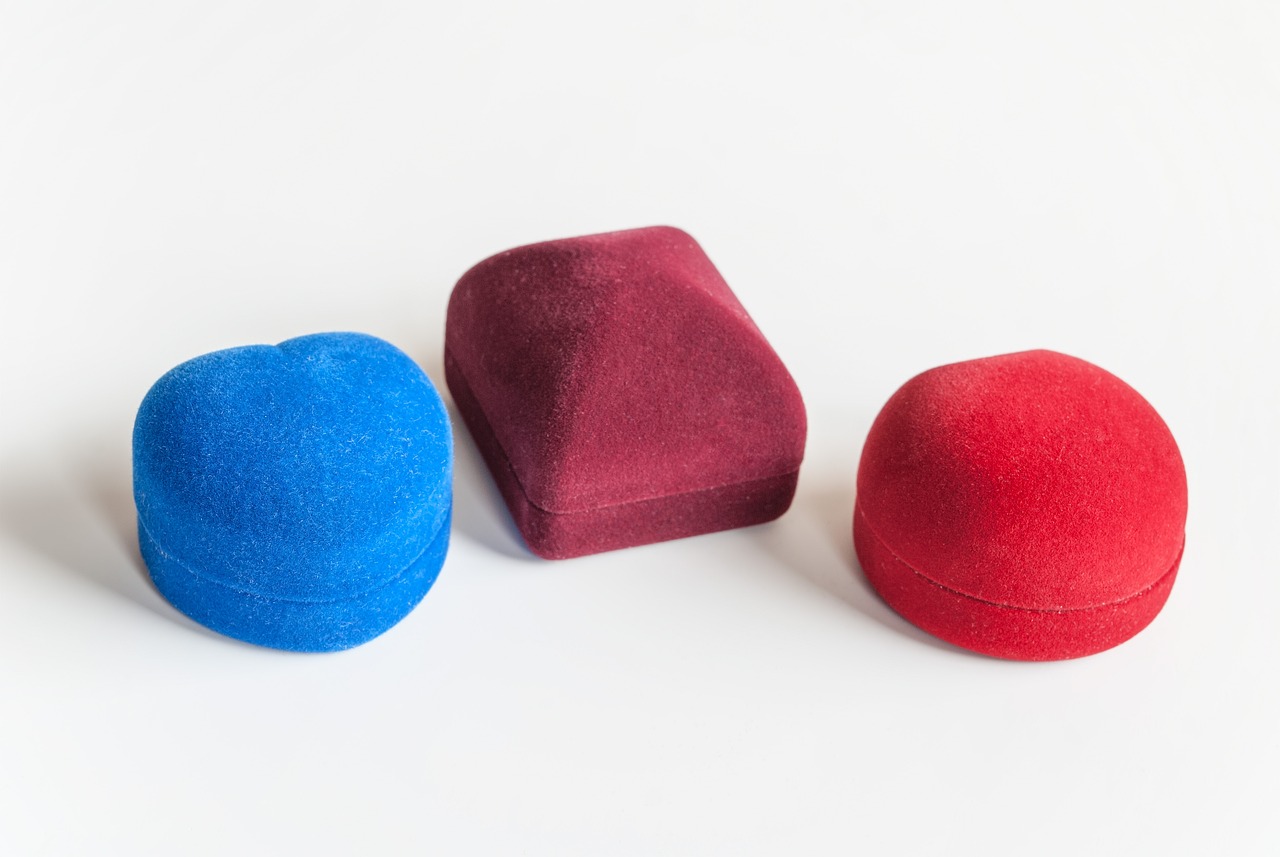
How to Identify Sustainable Jewelry Brands?
Identifying sustainable jewelry brands is crucial for consumers who wish to make responsible purchasing decisions. As the demand for ethical and eco-friendly products rises, understanding the key factors that define sustainability in jewelry becomes essential. This article will delve into the various aspects that help consumers recognize sustainable jewelry brands.
Understanding Certifications
One of the first steps in identifying a sustainable jewelry brand is to look for certifications. Certifications like Fair Trade, Responsible Jewelry Council, and GIA (Gemological Institute of America) signify that a brand adheres to ethical practices. These certifications ensure that the materials used are sourced responsibly and that the labor conditions meet fair standards. Consumers should seek out these certifications to ensure their purchases align with their values.
Materials Used in Sustainable Jewelry
Sustainable jewelry brands often utilize recycled metals, lab-grown gemstones, and other ethically sourced materials. Recognizing these materials is vital for consumers. For instance, recycled gold and silver reduce the need for mining, which is often associated with environmental degradation. Lab-grown gemstones not only provide a conflict-free alternative but also minimize the ecological footprint associated with traditional mining practices.
Brand Commitment to Ethical Practices
Another important factor is the brand’s overall commitment to ethical practices. This includes transparency in their supply chain, community engagement, and efforts to reduce their carbon footprint. Brands that openly share their sourcing methods and engage in sustainable practices often provide consumers with the confidence that their purchases contribute to positive environmental and social impacts.
Conclusion
In conclusion, identifying sustainable jewelry brands requires a multifaceted approach that includes recognizing certifications, understanding the materials used, and evaluating the brand’s commitment to ethical practices. By being informed and vigilant, consumers can make choices that not only enhance their personal style but also support a more sustainable and ethical jewelry industry.
Certifications and Standards to Look For
The jewelry industry is evolving rapidly, and with this evolution comes a heightened awareness of ethical practices. As consumers become more conscious of their purchasing decisions, certifications have emerged as crucial indicators of a brand’s commitment to sustainability and ethical standards. These certifications serve as a beacon for consumers, guiding them towards brands that prioritize ethical practices in their production processes.
Among the most recognized certifications are Fair Trade and the Responsible Jewelry Council. These certifications not only validate a brand’s adherence to ethical labor practices but also ensure that the materials used in their products are sourced responsibly. For instance, Fair Trade certification guarantees that artisans and workers receive fair wages and work under safe conditions, empowering communities and promoting social equity.
In addition to Fair Trade, the Responsible Jewelry Council certification focuses on the entire supply chain, from mining to retail. This certification emphasizes the importance of transparency, ensuring that consumers can trace the origins of their jewelry and confirm that it has been produced without causing harm to the environment or exploiting workers.
Moreover, brands that carry these certifications often engage in environmentally sustainable practices. This includes using recycled materials, reducing carbon footprints, and actively participating in conservation efforts. By choosing to buy from certified brands, consumers are not only making a fashion statement but also supporting a movement that advocates for ethical consumption.
Ultimately, understanding and recognizing these certifications can empower consumers to make informed choices. As the demand for sustainable and ethical jewelry continues to rise, brands that embrace these certifications will not only gain consumer trust but also contribute to a more equitable and sustainable future in the jewelry industry.
Materials Used in Sustainable Jewelry
Sustainable jewelry is gaining traction in the fashion industry as consumers become more aware of their purchasing choices. One of the key aspects of this movement is the use of environmentally friendly materials. By understanding the different materials utilized in sustainable jewelry, consumers can make informed decisions that align with their values.
- Recycled Metals: Many sustainable jewelry brands use recycled metals, such as gold, silver, and platinum. This practice reduces the demand for newly mined materials, which can be harmful to the environment. Recycling metals also lowers energy consumption and minimizes waste in landfills.
- Lab-Grown Gemstones: Lab-grown gemstones are created using advanced technology that replicates the natural formation process. These stones are often less expensive and have a significantly lower environmental impact compared to traditionally mined gemstones. They also eliminate ethical concerns related to mining practices.
- Ethically Sourced Materials: Sustainable jewelry brands prioritize sourcing materials from suppliers who adhere to ethical labor practices. This includes ensuring fair wages and safe working conditions for miners and artisans, contributing to the overall well-being of communities involved in the production process.
- Natural and Organic Materials: Some brands incorporate natural materials such as wood, seeds, and shells, which are sustainably harvested. These materials not only reduce the carbon footprint but also offer unique aesthetics and textures to jewelry pieces.
- Recycled Glass and Plastic: Innovative designers are also using recycled glass and plastic to create stunning jewelry. This approach not only helps reduce waste but also promotes a circular economy, where materials are reused rather than discarded.
In conclusion, the materials used in sustainable jewelry play a crucial role in promoting environmental responsibility and ethical practices within the industry. By choosing jewelry made from recycled metals, lab-grown gemstones, and ethically sourced materials, consumers can support brands that align with their values and contribute to a more sustainable future.

The Consumer Shift Towards Ethical Purchasing
In recent years, there has been a significant transformation in consumer behavior, particularly in the realm of purchasing decisions. More individuals are now prioritizing ethical purchasing, actively seeking brands that resonate with their personal values and contribute positively to both society and the environment. This shift is not just a trend; it represents a fundamental change in how consumers perceive their roles in the marketplace.
As awareness of social and environmental issues grows, consumers are increasingly informed about the impact of their purchases. They are more inclined to support brands that demonstrate a commitment to sustainability and ethical practices. This has led to a rise in demand for products that are not only high-quality but also produced responsibly. For instance, many shoppers now prefer items made from recycled materials or those that utilize fair trade practices, ensuring that workers are compensated fairly and work in safe conditions.
The influence of younger generations, particularly Millennials and Gen Z, cannot be overstated. These groups are leading the charge towards conscious consumerism, often using social media platforms to advocate for brands that embody ethical values. They are more likely to research a brand’s background, scrutinizing its supply chain and environmental policies before making a purchase.
Furthermore, the role of technology in facilitating this shift is noteworthy. With the rise of e-commerce, consumers have greater access to information about the brands they support. Online reviews, social media, and dedicated platforms for sustainable products empower consumers to make informed choices. As a result, brands that fail to adopt ethical practices risk losing their customer base to more responsible competitors.
In conclusion, the movement towards ethical purchasing is reshaping the retail landscape. As consumers continue to demand transparency and accountability, brands must adapt to meet these expectations or risk becoming obsolete. The future of shopping is not just about acquiring goods; it is about making a positive impact on the world.
Millennials and Gen Z Leading the Change
The jewelry industry is experiencing a significant transformation, largely driven by the values and preferences of younger consumers. Millennials and Gen Z, in particular, are at the forefront of this change, advocating for a more sustainable and ethical approach to jewelry production. This shift is not merely a trend; it reflects a deep-seated desire for transparency and responsibility in consumer choices.
These generations are increasingly aware of the impact of their purchases on the environment and society. As a result, they are actively seeking out brands that align with their values, prioritizing those that demonstrate social responsibility and environmental stewardship. This demand has prompted many jewelry brands to rethink their practices and adopt more sustainable methods.
One of the key factors driving this change is the access to information. With social media and online platforms, consumers can easily research brands and their practices. This transparency allows them to make informed decisions, opting for jewelry that is not only beautiful but also ethically sourced. The rise of platforms dedicated to sustainable fashion has further amplified this trend, showcasing brands that prioritize ethical practices.
Moreover, the emotional connection that Millennials and Gen Z feel towards their purchases cannot be overlooked. They are more likely to invest in pieces that tell a story or support a cause, making jewelry a form of personal expression and a statement of values. This has led to a growing market for customized and personalized jewelry that reflects individual beliefs and commitments to sustainability.
In conclusion, the influence of Millennials and Gen Z on the jewelry industry is profound. Their demand for sustainable and ethical options is reshaping the market, encouraging brands to adopt practices that are not only beneficial for the environment but also socially responsible. As this trend continues to grow, it is clear that the future of jewelry will be defined by the values of its consumers.
The Role of Social Media in Promoting Ethical Brands
In today’s digital age, social media platforms have emerged as powerful tools for raising awareness about sustainable and ethical jewelry brands. These platforms enable consumers to connect with brands that align with their values and share their commitment to sustainability. Through various channels such as Instagram, Facebook, and TikTok, users can discover new ethical options and engage with brands that prioritize responsible practices.
One of the most significant impacts of social media is the ability to amplify voices that might otherwise go unheard. Influencers and advocates for sustainable jewelry often use their platforms to educate followers about the importance of ethical sourcing and production methods. This creates a ripple effect, encouraging more consumers to consider the implications of their purchases.
Moreover, social media campaigns featuring influencer partnerships have proven to be effective in promoting sustainable brands. Influencers who are passionate about ethical fashion can showcase jewelry pieces, share personal stories, and highlight the positive impact of choosing sustainable options. This not only increases visibility for these brands but also fosters a sense of community among like-minded individuals.
Another advantage of social media is the ability to share user-generated content. Consumers who purchase from sustainable brands often post their experiences online, showcasing their jewelry and sharing the stories behind the pieces. This organic promotion helps build trust and authenticity, as potential buyers see real people supporting ethical practices.
In conclusion, social media platforms are instrumental in promoting ethical jewelry brands. By facilitating connections between consumers and brands, amplifying important messages, and fostering community engagement, these platforms are reshaping the jewelry industry towards a more sustainable future.
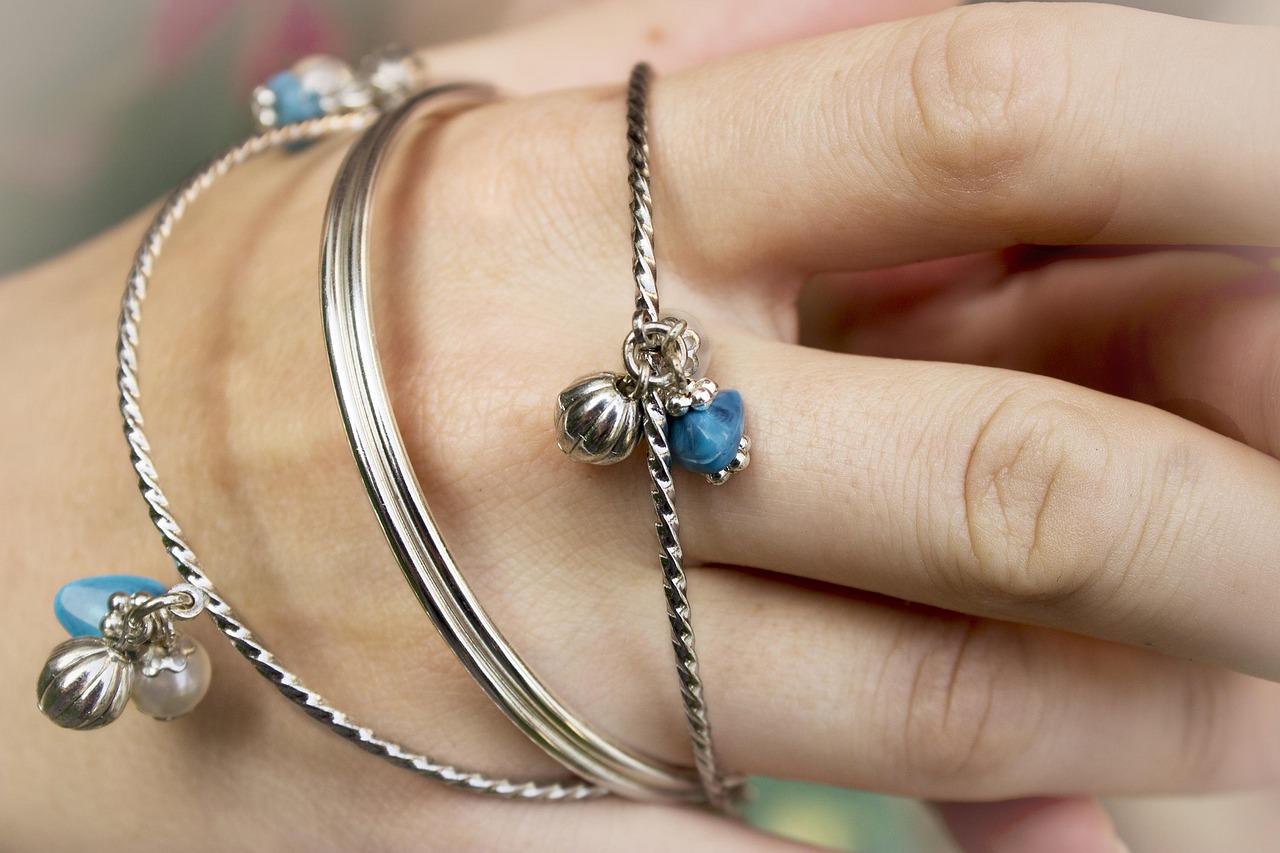
The Future of Sustainable Jewelry
The future of sustainable jewelry is bright, as the industry embraces a variety of innovations that prioritize both environmental responsibility and ethical practices. With a growing awareness among consumers, brands are increasingly adopting methods that not only reduce their ecological footprint but also promote fair labor standards.
One of the most significant trends shaping the future of sustainable jewelry is the use of innovative materials. Traditional mining practices can have devastating effects on the environment, including habitat destruction and pollution. In contrast, many sustainable brands are now utilizing recycled metals and lab-grown gemstones, which significantly lower the environmental impact associated with mining. These alternatives not only help conserve natural resources but also offer consumers beautiful products that align with their values.
Moreover, advancements in production methods are playing a crucial role in the evolution of the jewelry industry. Techniques such as 3D printing and sustainable sourcing are becoming more prevalent, allowing brands to minimize waste and energy consumption. This shift towards more efficient manufacturing processes is essential for reducing the overall carbon footprint of jewelry production.
Consumer awareness is also on the rise. More individuals are actively seeking out brands that demonstrate a commitment to sustainability and ethical practices. This shift is encouraging companies to be more transparent about their sourcing and production processes. As consumers demand ethical jewelry, brands are responding by prioritizing social responsibility and environmental stewardship.
In conclusion, the future of sustainable jewelry is not only promising but also essential for the health of our planet and its people. As innovations in materials and production methods continue to develop, and as consumer awareness grows, the jewelry industry is poised for a significant transformation towards a more responsible and ethical future.
Innovations in Sustainable Materials
In recent years, the jewelry industry has witnessed a remarkable transformation driven by advancements in technology. These innovations have paved the way for the creation of sustainable materials that not only reduce environmental impact but also cater to the growing consumer demand for eco-friendly products. Among these materials, lab-grown diamonds and recycled metals stand out as prime examples reshaping the landscape of jewelry.
Lab-grown diamonds are created using advanced technological processes that replicate the natural conditions under which diamonds form. This method not only produces high-quality gemstones that are chemically and physically identical to their mined counterparts but also significantly reduces the environmental toll associated with traditional diamond mining. By opting for lab-grown diamonds, consumers can enjoy the beauty of these gems while supporting sustainable practices.
Moreover, the use of recycled metals has gained traction within the industry. Recycled gold, silver, and platinum are sourced from old jewelry and electronic waste, minimizing the need for new mining operations. This practice not only conserves natural resources but also reduces energy consumption and greenhouse gas emissions associated with metal extraction. As a result, brands that incorporate recycled metals into their designs are making a substantial contribution to environmental sustainability.
Additionally, innovations in sustainable materials extend beyond diamonds and metals. Brands are increasingly exploring the use of biodegradable materials, such as plant-based resins and recycled plastics, to create unique and stylish jewelry pieces. These materials not only offer aesthetic appeal but also align with the values of environmentally conscious consumers.
As the jewelry industry continues to evolve, the focus on sustainable materials is expected to grow stronger. This shift not only reflects changing consumer preferences but also highlights the industry’s commitment to ethical practices and responsible sourcing. With ongoing innovations, the future of jewelry promises to be both beautiful and sustainable, allowing consumers to make choices that benefit the planet.
Consumer Education and Awareness Initiatives
play a pivotal role in shaping the future of sustainable jewelry practices. As the demand for ethical products rises, it is essential to inform consumers about the significance of their purchasing choices. This awareness not only influences buying behavior but also encourages brands to adopt more responsible practices.
In recent years, there has been a noticeable shift in consumer preferences towards sustainability. Many individuals are now more conscious of the environmental and social impacts of their purchases, particularly in the jewelry sector. Education initiatives aimed at raising awareness about the importance of sustainable practices in jewelry are essential for fostering a culture of responsible consumption.
- Workshops and Seminars: Hosting workshops and seminars can provide valuable information about sustainable materials, ethical sourcing, and the environmental impact of traditional jewelry production.
- Online Campaigns: Utilizing social media platforms for awareness campaigns allows brands to reach a wider audience, sharing stories and information about their sustainable practices.
- Collaborations with Influencers: Partnering with influencers who are passionate about sustainability can help amplify the message and engage younger consumers who are increasingly seeking ethical options.
Moreover, educational resources such as blogs, videos, and infographics can simplify complex information, making it accessible to a broader audience. These resources should highlight the benefits of sustainable jewelry, such as reduced environmental impact and support for fair labor practices.
As consumers become more informed, they are likely to demand greater transparency from brands. This shift can lead to a significant transformation in the industry, pushing more companies to adopt ethical standards and practices. Ultimately, consumer education and awareness initiatives are not just beneficial for individuals but are crucial for the entire jewelry industry, paving the way for a more sustainable future.
Frequently Asked Questions
- What makes jewelry sustainable?
Sustainable jewelry is crafted using eco-friendly materials, such as recycled metals and lab-grown gemstones. It also focuses on reducing environmental impact throughout the production process while ensuring fair labor practices for workers involved.
- How can I tell if a jewelry brand is ethical?
Look for certifications like Fair Trade or the Responsible Jewelry Council. Additionally, investigate the brand’s transparency regarding their sourcing practices and labor conditions. Brands that openly share their production methods and materials are usually more trustworthy.
- Why should I choose sustainable jewelry?
Choosing sustainable jewelry not only supports ethical labor practices but also helps protect the environment. By opting for these brands, you’re making a statement that you care about the planet and the communities that contribute to the jewelry industry.
- Are lab-grown diamonds considered ethical?
Yes! Lab-grown diamonds are a fantastic ethical alternative to mined diamonds. They have the same physical and chemical properties but are created in a controlled environment, eliminating the negative impacts associated with traditional diamond mining.
- How is social media influencing sustainable jewelry brands?
Social media plays a crucial role in raising awareness about sustainable jewelry. Influencers and campaigns help connect consumers with ethical brands, making it easier to discover and support those that align with their values.


